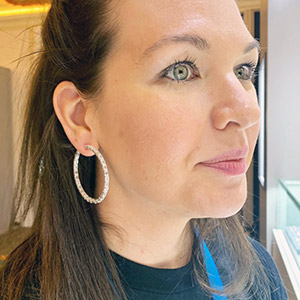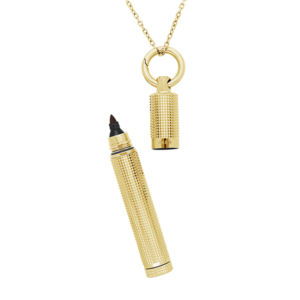
This week, De Beers released a report that showed that, when consumers buy diamonds—younger ones in particular—they rank sustainability concerns above traditional factors such as style and price. They want good environmental stewardship and support for local communities.
The report called this an opportunity for the natural diamond industry, which “undeniably—and significantly—positively impacts the people and place where diamonds are discovered.”
That is true, in many cases. Unfortunately, it is not true in every case, and in some cases, sadly, it isn’t true at all. While I agree the industry has done a lot of good—which you can read about here—the diamond supply chain still has serious issues that we can no longer sweep aside.
Consider: The Koidu mine in Sierra Leone is now the subject of litigation brought by irate locals complaining of mistreatment. (Owner BSG Resources denies the charges.) Petra had to settle a lawsuit after guards at its Williamson mine in Tanzania used violence against local diggers. The conduct and nontransparency of miners in Marange, Zimbabwe, has long been a problem; those diamonds are banned from the United States. Last month, a Democratic Republic of Congo (DRC) official claimed that a tailings leak at Angola’s Catoca mine killed 11 people in the DRC, and sickened thousands more. (Catoca denies this.) Last week’s Kimberley Process Civil Society Coalition webinar brought up environmental and community issues around mining in Lesotho.
Ongoing community protest against Anjin diamond mining company by communities: Land rights, cultural rights;Compensation, Consultation access to environmental information are the issues @HeraldZimbabwe @KPCivilSociety1 @ShamisoMtisi @ZELA_Infor @CNRG_ZIM @mlevu28 @DChidarara pic.twitter.com/RO0yeXvtVl
— Nyaradzo Mutonhori (@nmutonhori) October 28, 2021
A Tweet about a protest at a diamond mine in Marange, Zimbabwe
No industry is perfect, and there will always be an inherent tension when rich miners set up operations in poor countries. But these are ugly episodes, not minor blemishes. They were never acceptable, but they are even less so now.
Moreover, these problems aren’t limited to the artisanal small-scale mining (ASM) sector—which has always had issues—but involve large-scale miners. They are supposed to be the “controlled” part of the industry.
Granted, we’re not the only business with these concerns. Gemstone mining has problems; so does gold. Trillion-dollar eco-darling Tesla and other tech giants have drawn fire for sourcing cobalt from a mine where 43 artisanal miners were killed.
Yet the natural diamond business faces more scrutiny than others, due to its history and bad public image (not many industries have had a big movie slamming them). Diamonds are also a luxury product that no one needs. It also has a sharp-elbowed competitor nipping at its heels, happy to use these tragedies as marketing hooks.
This heightened scrutiny may not be fair to the diamond industry, but getting assaulted or having to drink poisoned water isn’t fair either.
So, what should the trade do? The Kimberley Process (KP) is unlikely to adequately address these issues even if it did expand the definition of conflict diamonds—which, of course, it hasn’t. The industry can’t always rely on local governments to step in; they are often partial owners of the troubled mines.
Ten years ago, I asked, if the Kimberley Process “is not the best forum to handle these questions…then what?” We still don’t know. Some say just give up natural and sell lab-grown; but killing the business in poor countries risks negating the positive effect the industry does have, and jeopardizes millions of livelihoods.
Moreover, just as with the natural sector, not all is rosy with lab-growns. Some companies have been owned by criminals, or their associates. Most synthetics are produced in Chinese factories, many of which are owned by its military. Those factories could be fine; they could be terrible. Without certification, it’s hard to know. One must always know who you’re dealing with, and refrain from painting huge, sprawling industries with a broad brush.
So, what should the industry do when these accusations arise? I posed this question to several interested parties; most didn’t respond, but I received two thoughtful replies, one from an NGO, one from an industry association. As you’ll see, their answers intersected somewhat, but not totally. I hope they spark further discussion:
Hans Merket
Researcher, International Peace Information Service (IPIS)
Member, Kimberley Process Civil Society Coalition

I don’t think there is one magic accountability formula, as it’s actor- and context-specific. For the industry as a whole, in my view, accountability starts with acknowledging “bad actions and actors” exist (which is still rare, unfortunately). This is a necessary first step to then continuously improve business practices to avoid being associated with any such actions and actors, and most important, using leverage to stop “bad” from being done.
I’m not a fan of a general consumer boycott, as it tends to be very emotion-driven and indiscriminate, and leaves little room for nuance. Moreover, I believe the onus should be on the industry, not on consumers. In the spirit of the OECD [Organisation for Economic Co-operation and Development] guidance, companies committing to ethical standards and due diligence should put business relations on hold as soon as there are suspicions of associations with serious human rights abuses, and use their leverage to undo such harms. From that moment the onus is on the company associated with the harms to prove that either the suspicions were unfounded, or else that the harms were remedied and are no longer occurring.
To use the Petra example, there have been reports in local media documenting serious human rights abuses since 2016 and by international NGOs since 2019. It is therefore striking that Petra’s diamond sales in Antwerp and elsewhere have never been in question to date. I indeed think that it is only normal that responsible diamond companies stop buying diamonds from the Williamson Mine (and from mines like Catoca, Koidu, and the Marange area) until there is proof that the settlement reached with impacted communities is satisfactory and that no further harm is being done. A stop should not be indefinite, nor should the decision to start buying again. Due diligence is a continuous process, based on the evolving evidence.
Unfortunately, a lot of this evidence only reaches downstream radars when things have escalated already so much that it becomes hard to rectify the situation. This is why industry needs to invest more in community engagement. This is today mostly limited to charity, while little is done to engage directly with communities and actually listen to them. To again use the Tanzania example, when we went to survey communities in 2018 to ask them about how they perceived the impact of the Williamson mine we were apparently the first to ever ask them these questions. If Petra had only invested in setting up mechanisms for meaningful community engagement from the start, many of the harms could have been avoided, and it would likely have cost the company much less than what it is paying now on lawyers and settlements.
Iris Van der Veken
Executive director, Responsible Jewellery Council (RJC)

The industry needs to advance collaboration and step up collectively when issues arise. It is a shared accountability and all stakeholders have a role to play: governments, business, NGOs, consumers and society at large. A truly sustainable supply chain is grounded in collective responsibility. No aspect of production can be viewed in isolation: human rights, labor conditions, anti-corruption measures, and environmental impact are all inextricably linked. Materials, design, people, distribution, and retail—the relationships between these components of the supply chain, require a collective effort.
Corporate leadership values are critical. These include a commitment to human rights, gender, and environmentally friendly sourcing practices. These are non-negotiable commitments.
What needs to be prioritized is thorough due diligence and reporting on progress. The OECD due-diligence guidance is the benchmark policy (and is incorporated into RJC’s 2019 code of practices.) If all companies really apply a supply chain due diligence approach, illegitimate sources will be identified.
Based on the OECD due-diligence guidance and also the United Nations Guiding Principles, the default response to a red flag is not necessarily to cease business, but rather to have a clear approach to remedy and check whether there are alternatives such as working with the supplier to mitigate the issues or engage with NGOs to find solutions on the ground. Integrating sustainability takes time, and it requires strong management systems. It also is incumbent that companies report publicly on issues identified and find appropriate ways to engage civil society and the public.
Application of proper anti–money laundering due diligence will help companies to comply. Working with ASM organizations like the Alliance for Responsible Mining (which certifies Fairmined gold), the Diamond Development Initiative/Resolve, and GemFair also helps to drive demand from legitimate ASM sources.
A final thought: governments have a responsibility to protect. Governments and international agencies such as the United Nations must ultimately take more decisive action with governments when serious issues arise.
Thanks, Iris and Hans. Here’s my takeaway: Ask questions. When you hear of problems, inquire what’s happening. If a company makes claims—about origin, community engagement, or eco-friendliness—make them prove it. And definitely find out who owns them.
We need to talk more about due diligence—in a clear, jargon-free way. The new World Diamond Council system of warranties is meant to introduce (and commit) traders to that concept. NGOs believe it should be beefed up. Ideally, traders and retailers will complete both the WDC’s self-assessment tool and consult the more extensive OECD guidance.
Like all businesses, the diamond industry will remain under scrutiny, not just from consumers but from banks and governments. There are reasons to be hopeful, including worthy new initiatives and tracking systems. Merket wants diamond miners to get certified by the Initiative for Responsible Mining Assurance (IRMA), which I profiled here. One noted retailer apparently wanted all its suppliers to get IRMA audits. That retailer has since been purchased, but I hope it sticks to that. (At press time, no diamond miners have been IRMA certified.)
This industry has much to be proud of, and unfortunately, problems that need to be addressed. Some people may not like me pointing that out, but ignoring issues or pretending they don’t exist rarely works out well. Just look at what’s happening now with Facebook.
When the industry says “diamonds do good,” it must be held to that. Ideally, we can get to a point where we can truly say “all diamonds do good.” At the very least, people should know what they’re buying. None of this will be easy. But in this new environment, we no longer have a choice.
(Top photo: Getty Images)
- Subscribe to the JCK News Daily
- Subscribe to the JCK Special Report
- Follow JCK on Instagram: @jckmagazine
- Follow JCK on X: @jckmagazine
- Follow JCK on Facebook: @jckmagazine







